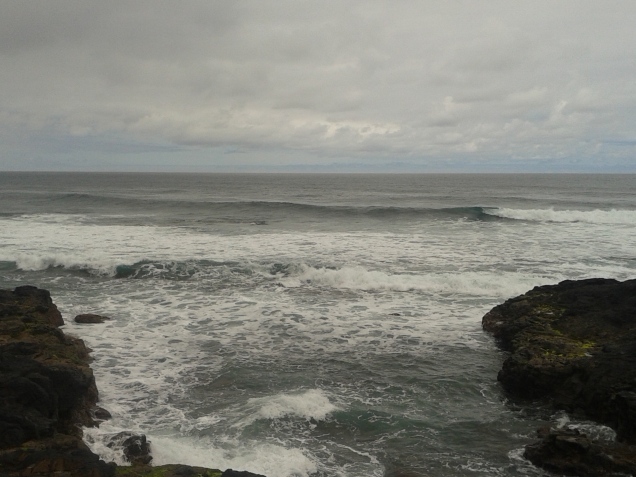
I’ve been a bit troimh-cheile over the last week, which is a Gaelic word that means being in a bit of a guddle, which is a Scots expression that means, well, a bit all over the place. A bad cold has left me not wanting to do too much. I wanted to share some thoughts on a TV programme on Lent and am only now getting around to it.
Last week, I watched Traisg ‘s Caisg, a programme on how Lent is kept in the Western Isles of Scotland. It is in Scottish Gaelic with English subtitles and has some lovely shots of island landscapes. I realise that anyone outside UK can probably only watch the clip. However, the programme gave me a lot to think about.
A bit of background
Firstly, a bit of background. The Western Isles stretch north to south about 40 miles off the northwest coast of Scotland. Thanks to causeways, you can travel along the whole 120 km length with only two ferry crossings. They are also known as the Outer Hebrides, the name coming from the Irish St Bridget.
The Southern Isles, Barra and Vatersay, north to Benbecula, contain some of the few Catholic communities which survived both the Reformation and the Highland clearances. The Northern Isles, North Uist to Lewis, are strongholds of reformed Presbyterianism. Despite the religious differences, the islands share the same language, culture and administrative council.
It’s worth saying a bit more about this. Until the mid 19th century, the main church in the Scottish Highlands was the Church of Scotland. However, people became unhappy that their landlord had the power to choose the local minister. After the Highland clearances, when landlords evicted large numbers of people from their ancestral homes, feelings came to a head. In 1843, 450, or about a third of the ministers, walked out, giving up their churches and manses to form the Free Church.
The new Free Church was particularly strong in the Highlands. The Free Church also did a lot to mitigate the effects of the Highland potato famine. It had radical roots, even if it is now seen as the status quo. Ministers gave up their churches, homes and a reliable source of income. Sometimes they preached from boats until new churches were built.
Since the mid-nineteenth century, the Highland Free Church has fragmented many times due to disagreements over doctrine and church practice (just take a look at this diagram, and it doesn’t show all the splits). Even in the last year, people have formed new churches, rather than resolving differences.
Whatever the particular branch, Highland Presbyterian churches tend to be distinct from the Church of Scotland. Usually, they observe a strict Sabbath, and have unaccompanied Psalm singing instead of hymns, although this has eased up recently. Another difference, which was strong when I was growing up, is that Christmas and Easter are not celebrated in church. When I was a child, we simply marked them as commercial festivals, a time to give presents and over-eat at Christmas and to get chocolate eggs at Easter.
A look at Lent and Holy Week
This brings me back to the programme on Lent in the Western Isles. It gave interesting insights into local traditions, such as eating a chicken on Shrove Tuesday or putting no iron in the ground on Good Friday. The programme highlighted not just the forty days of Lent, but also Catholic traditions around Holy Week from Maundy Thursday through to Easter Sunday.
I wish I had watched something like this a few years ago as it brought together Holy Week traditions which I just picked up as I went along. The programme explains how the events around Jesus’ passion are re-enacted in the church, such as the covered statues and bare altar on Good Friday in memory of Christ’s death and burial, or the five pieces of incense put into the Easter candle, to symbolise the wounds of Christ.
I was wondering why the programme went into such detail on Holy Week, when I realised that it was probably aimed at helping Protestants understand how Catholics prepare for Easter.
Christ at the heart of Lent and Easter
It took me a long time to accept Easter. Many years ago, I attended my first Easter service in a Baptist church, and my reaction was anger. What did these people have to be happy about? Wasn’t religion supposed to be a long, cheerless trudge without any joy?
I was a considerable way into my journey towards Catholicism before I could stop looking over my shoulder at the church tradition I had come from. For a long time, I couldn’t shake off the feeling that they were right about not celebrating Easter and that the Catholic tradition was wrong.
Another thing, I struggled with was the leftover belief that Catholics worship statues and symbols instead of Christ. This programme on Lent did a very good job of showing that Christ as at the heart of Catholic practice related to Lent and Easter. We use images and symbols as an aid to bring us deeper into a mystery which goes beyond our senses and our mental processes. The symbolism of a church in darkness, and the Easter fire being used to light the candles which will then bring new light into the church, can help us move deeper into the mystery of the resurrection.
I also think that these signs and symbols speak to the child within us. After all, don’t we have to become like little children in order to enter the Kingdom of Heaven?





